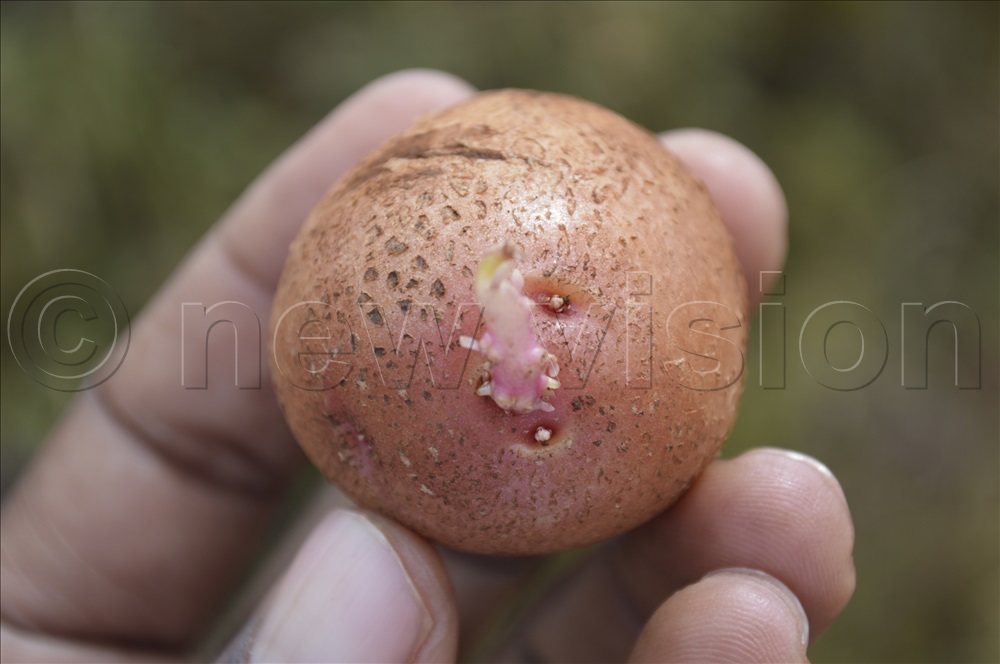By Umar Nsubuga
Isaac Malinga an Irish potato farmer in Kapchorwa says tuber bacterial blight disease attacks root tuber crops causing them to rot.
He says when it attacks your plant, it gradually dries and dies.
“It is caused by bacteria and its symptom is the wilt of leaves and stem. It also causes tubers and stem to rot,” he says.
According to Malinga, to prevent the disease, farmers have to plant disease-free tubers, do crop rotation and improve drainage.

Treatment
Mix 5kgs of marigold leaves with 10 liters of water, and 2 liters of animal urine and let it ferment for 7-14 days. Sieve and dilute with 10 litres of water. Add 50gms of washing soap and spray on the leaves once a week until no signs.
Disinfect farm instruments using jik, heating in hot ash or hot water.
Bacterial soft rot (black leg soft rot)
These infect the tubers, making them inedible. An infected tuber has cream to coffee brown-coloured tissues that are very soft and watery.
Gideon Zakke, an agronomist says the diseased area often has a black border separating it from a healthy one.
The soft rot decay is generally odourless but becomes soiled and slimy when other secondary bacteria invade the infected tissues.
Soft rot bacteria can sometimes consume the entire tuber, leaving only its peel in the soil. The tubers may be infected either in the ground or storage. Bacteria can rot tubers fully in 3- to 10 days.
Prevention
There is no known effective control measure of bacterial soft rot. Zakke says the following practices can lessen its damage to the plant population;
- Plant crops in well-drained soil.
- Hill the plant / raise the ground to encourage excess water to flow away from them. Do not store stained or cut tubers.
- Plant the whole seed tuber.
- Control nematodes and other insect pests that serve as vectors (carriers) of the bacteria to invade the plant tissues.
- If possible, avoid plant injury during weeding, especially when the disease symptoms are observed. Remove infected plants immediately.
- Remove plant residues after harvest.
- Practice crop rotation by using crops that are not susceptible to the bacterial soft rot disease like soybeans, forage legumes, and small grains.
Treatment
Wait until the leaves turn yellow and die before digging the potatoes carefully to avoid cutting them. This is because the cut potatoes are the most affected.





